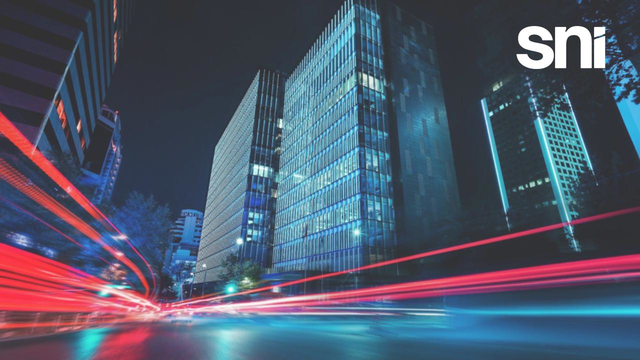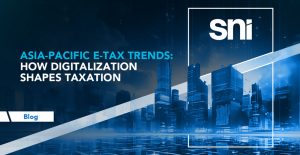The Romanian Government has announced multiple electronic tax and accounting reporting implementations, starting with the obligation of the Standard Audit File, the official name of which is Informative Declaration 406. The new electronic reporting system aims to facilitate fiscal control and tax compliance.
Romania’s new e-invoice system was introduced in 2020 by the Ministry of Finance and ANAF. However, details of the e-invoicing system are to be clarified at the end of 2021. The new e-invoicing regulation covers B2G and B2B transactions. Additionally, the e-Transport system has been introduced with the aim of reducing smuggling and fraud on Romanian territory. While the Romanian government is shaping its own e-invoicing system, it closely examined and drew inspiration from that of Italy.
All B2G transactions conducted between Romanian public entities have to issue e-invoices through the national invoicing system (the Romania e-Invoicing system). Taxpayers are required to be established in Romania. B2B e-invoices are mandatory for only high fiscal risk products, such as vegetables, fruits, mineral products, clothing, footwear, and construction materials.
Unlike the e-invoicing system, the Romanian government introduced e-Transport, which is similar to e-waybill. Taxpayers exchanging in high fiscal risk products are required to use the RO e-Transport system to monitor the transport of these products.
1. What is the deadline of each reporting system in Romania?
B2G and B2B e-invoicing and e-Transport systems were introduced on a voluntary basis until June 30, 2022. From 1 July, 2022, target taxpayers (which cover all B2G transactions and B2B transactions made with high fiscal-risk products) are required to issue e-invoices on a mandatory basis. The tax authority stated that the product range will be expanded.
The SAF-T reporting obligation started with the first group of large taxpayers in January. ANAF announced that the taxpayers would submit their reports by the end of July 2022. The second group of large taxpayers’ obligations will start in July 2022 and will come with a six-month grace period. Medium taxpayers will be under obligation in 2023, and small taxpayers in 2025.
2. What are the similarities between the RO e-Invoice and RO e-Transport systems?
- The DUK integrator is an optional tool for sending the XML to the government portal.
- Before transmission, register with Private Space Virtual (SPV), which is developed by ANAF.
- Shared APIs are the same and can be used for both e-invoicing and e-Transport.
- Both are managed by the Ministry of Finance and the National Financial Administration Agency (ANAF).
- Both e-invoices and e-Transport-issued electronic documents can be submitted online in two ways: through service providers or directly from the taxpayer’s ERP system.
- The Ministry of Finance’s digital signature applies for both e-invoices and e-Transport after being submitted to the platform.
- After validation in both systems, electronic documents are available for download for 60 days After that, they are archived in the preferred format.
3. What are the differences between the RO e-invoice and RO e-Transport systems?
- The RO e-Transport system lists iron and steel as high-tax-risk products.
- Each has its own platform; namely, the RO e-Invoice and the RO e-Transport system.
- The contents of the XML files are different and cannot be merged.
- In the e-Transport system a single, unique code is generated by the government after submission to verify the information.
- In e-Invoicing system the government assigns a sequential identification number.
4. What are the differences between e-invoices and SAF-T?
- In SAF-T reporting the DUK integrator is required for submission. The tool validates the XML files, converts them to PDF files, and packages them together.
- The digital signature applies to the Ministry of Finance’s e-invoice. However, the SAF-T file is signed by the taxpayer before submission.
- The SAF-T file must be uploaded to ANAF’s e-Declaration portal manually, whereas e-invoices submitted online through a service provider or directly from taxpayer’s ERP system.
- B2G e-invoices are mandatory for all VAT-registered entities. B2B e-invoices must be issued only for high-fiscal-risk products, althrough SAF-T is mandatory for all large taxpayers and the scope will be expanded for medium and small enterprises in due course.
5. What are the differences between e-Transport and SAF-T?
- The contents of the XML files are different. The e-Transport file contains the products’ names, characteristics, quantities, values, loading and unloading places, and transportation details (carrier name, plate number, etc.). The SAF-T file contains tax and accounting information.
- The RO e-Transport system has a unique single code named the ITU code, which is generated by the government during validation to verify the information.
- E-Transport must be issued only for high-fiscal-risk products. However, SAF-T is mandatory for all large taxpayers and the scope will be expanded gradually.
- Like the RO e-Invoice systems, the DUK integrator is an optional tool for RO e-Transport systems but is required for validation in the SAF-T process.
For more detailed information, have a look at the five key questions of each reporting system.
Five key questions about SAF-T reporting in Romania
Five key questions about e-invoicing in Romania
Five key questions about e-Transport in Romania
For more information about the process and our relevant solutions, please contact us at contact@snitechnogy.net.





